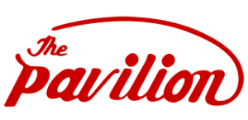
Wide range of bats to suit every budget
By Ashok Venugopal
BATS are generally of two types: English and non-English willow. English willows are made of fine seasoned wood with uniform grains and are priced higher. Non-English willow bats are generally, made of Kashmir willow or mango plank. These bats are generally used by cricketers at the beginning of their careers when they play with rubber, tennis and cork balls.
Mango plank wood bats are common in villages and suburbs of big cities where children generally play with rubber ball or cork ball in the bylanes and in the maidans.
Mango plank wood bats come in sizes from one to four and are available in all ‘fancy’ stores and small departmental stores and are priced between Rs.50 to Rs.350. These bats should not be used against cork or cricket ball as they cannot withstand shocks and could break easily.
At the school level, cricketers begin to play with the cricket ball. Most of them use a Kashmir willow first because it is cheaper than English willow, and secondly English willow bats are not easily available off the rack in districts and smaller towns.
SG, SS, Larsons, MRF, BDM, RNS, Vector are some of the leading manufacturers of bats who produce both Kashmir and English willow. The Kashmir willow bats are priced between Rs.350 to Rs.1600. English willow bats are lighter than the Kashmir willow and have better balance and durability.
There was a time during the pre-independence era when leading cricketers used India-made and imported English willow bats. Slazenger was a popular English brand.
MJ Gopalan, double international and the grand old man of world cricket always used an Indian bat. “I always used Autograph and Cannon brand bat, locally made during my playing days. ‘These English willow bats were good and were priced around Rs.100 then” said Gopalan. During the 70s and 80s when India began to tour more and more abroad, cricketers were fascinated by the English bats and began to use them regularly. Thus, you had a Sunil Gavaskar using a Duncan Fernlay, GR Viswanath a County and Dilip Vengsarkar a Gunn and More. At the same time there were a few Indian brands which were still popular among Indian cricketers. They were SS, BDM and Symonds. India’s former dashing opener and captain K Srikkanth used a Symonds bat throughout his career. “I always believed that Indian bats were on par with English ones. I never had any problem using a Symonds bat against the mighty West Indians or the Australians,” said Srikkanth.
All top Indian cricketers use only India-made bats with SS, SG, BDM, MRF and Reebok being the most preferred brands.
SG had a historic launch when Sunil Gavaskar used the bat during his epoch making 30th Test century in Chennai against West Indies in 1983, breaking the long-standing record of 29 hundreds set by the late Sir Donald Bradman. The Sunny Tonny bat he used was a rage among cricketers in the country. The bat that was price around Rs.2000 at that time is today available at Rs.5500 and popular among first class cricketers in the country.
Today, MRF Genius used by Sachin Tendulkar is the most popular bat in the country and is priced at around Rs.7000.
However, the English willows in demand by cricketers at the club and lower division league level are the ones made by SS, RNS and Larsons which come as low as Rs.1900.
SG range of English willows are priced from Rs 2600 (Concord) to Rs 7700 (Maxuum 7). SS bats are available from Rs 1900 (Supremo) to Rs 7300 (Ultimate).
MRF bats start from Rs 2950 (Bonzer) to Rs 6900 (Genius), while BDM bats are available at Rs 4105 (Master Blaster) to Rs 7285 (Aero Dynamic). Former Indian opening batsman Sadagoppan Ramesh feels that Indians bats are the best in the world. “I used a SS bat when I made my Test debut against Pakistan.


